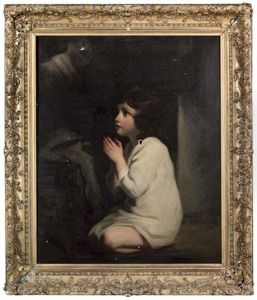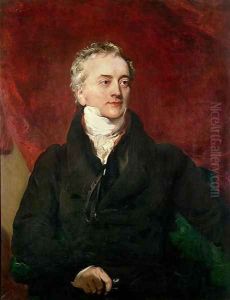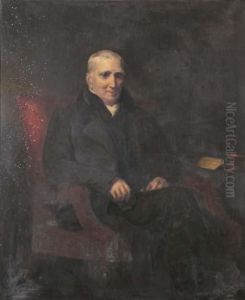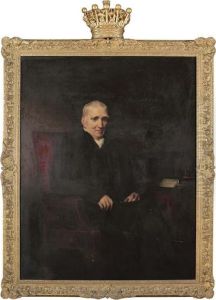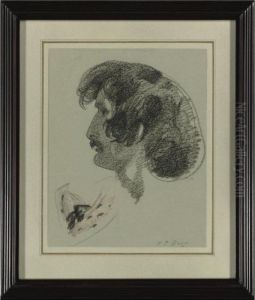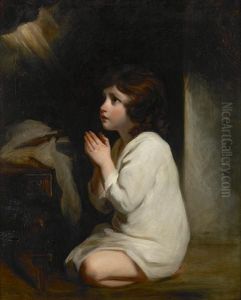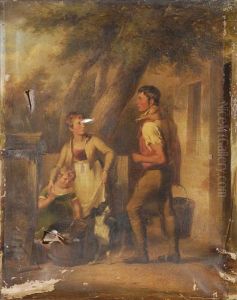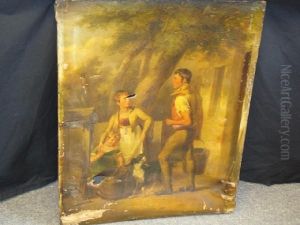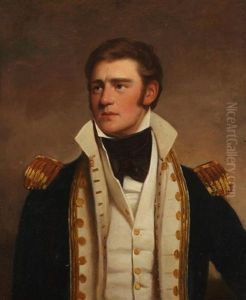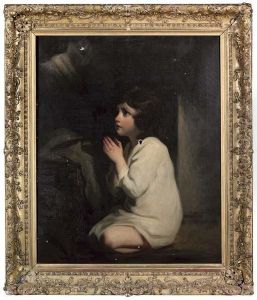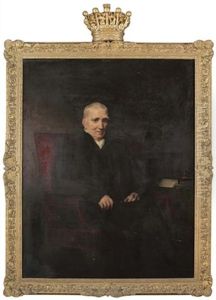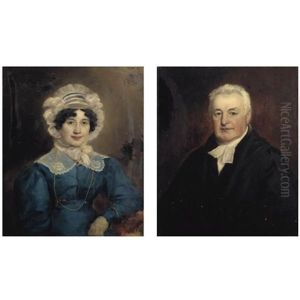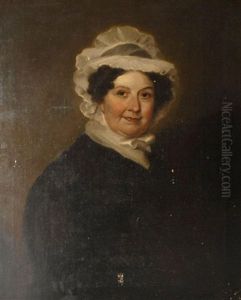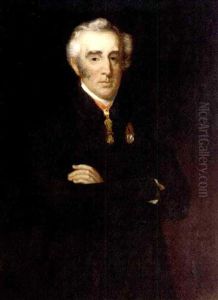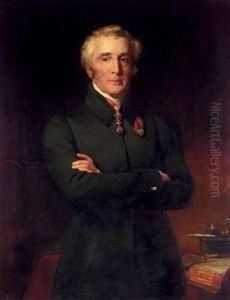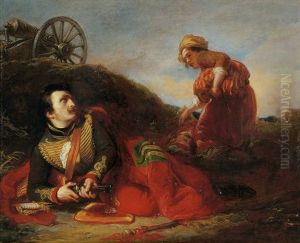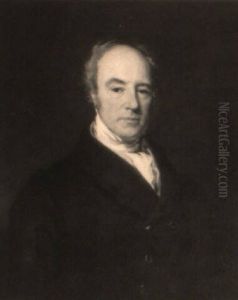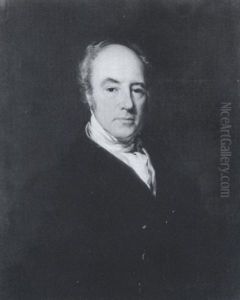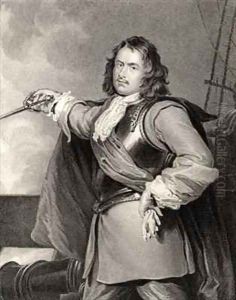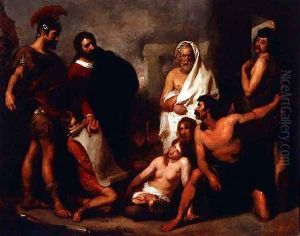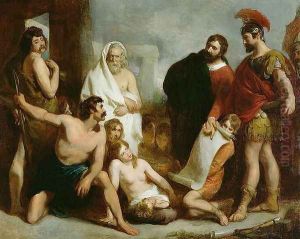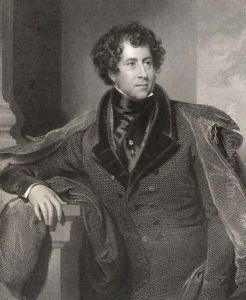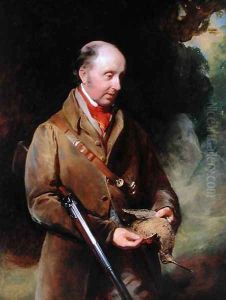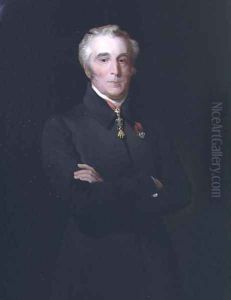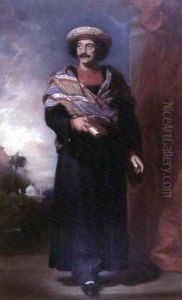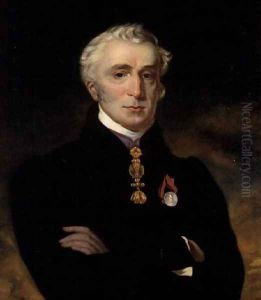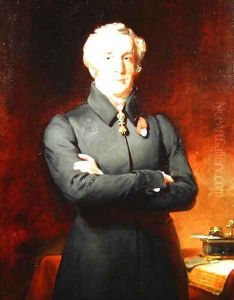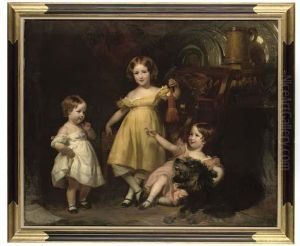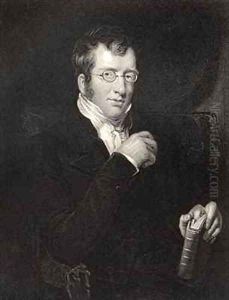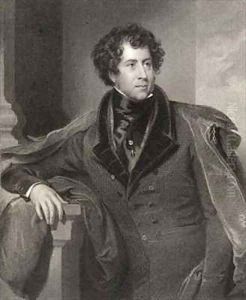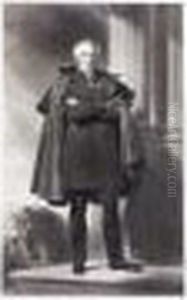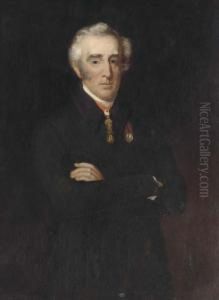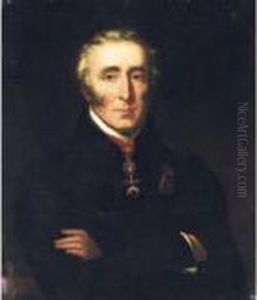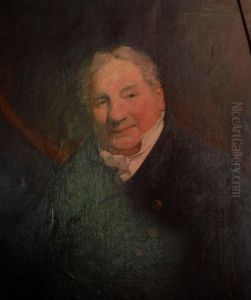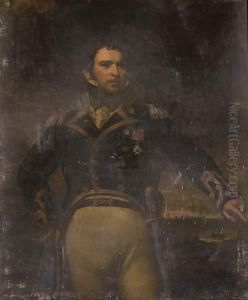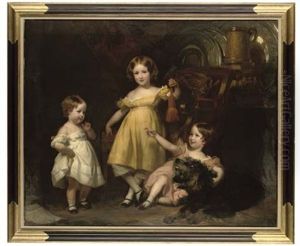Henry Perronet Briggs Paintings
Henry Perronet Briggs was a notable British painter who lived during the 19th century. Born on September 19, 1791, in Walworth, Surrey, England, Briggs was initially destined for a career in the Navy, but his passion for art prevailed. He began his artistic training at the Royal Academy Schools in 1811, where he studied under the tutelage of esteemed artists of the time.
Briggs first gained recognition for his historical and literary paintings, which were characterized by their dramatic narrative content and meticulous attention to detail. His works often drew on popular stories and plays, capturing the imagination of the public. One of his most famous paintings is 'The First Interview between the Spaniards and the Peruvians,' which was exhibited in 1827 and received widespread acclaim for its vivid portrayal of the encounter.
Throughout his career, Briggs exhibited numerous works at the Royal Academy and the British Institution. His subjects ranged from classical and historical scenes to portraits of contemporary figures. In addition to historical narratives, he painted scenes from Shakespeare's plays, which were well-received for their evocative interpretations and earned him a reputation as a skilled painter of literary subjects.
In 1832, Briggs was elected as an Associate of the Royal Academy, and in 1835, he became a full Royal Academician. This recognition was a testament to his contribution to the British art scene and his status among his peers.
Despite his success, Briggs's life was not without challenges. He was known to be a deeply religious man, and his faith influenced his approach to art and life. His devout nature sometimes conflicted with the artistic trends of the time, which occasionally placed him at odds with the mainstream art world.
Henry Perronet Briggs passed away on January 18, 1844, leaving behind a legacy of work that continues to be admired for its historical significance and artistic merit. His paintings are held in various collections, including the Tate Gallery and the Victoria and Albert Museum in London, serving as a testament to his skill and dedication to the arts.
